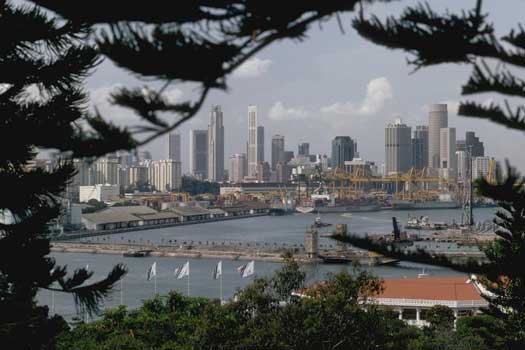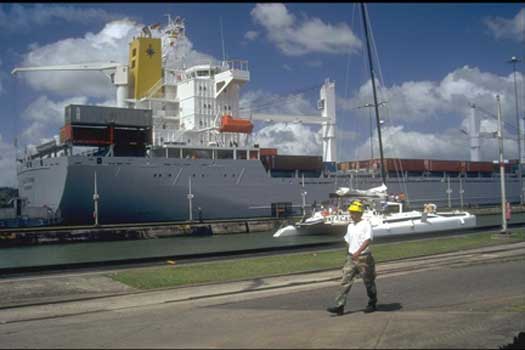BENEFITS
-
1
Free Trade Agreements
Free Trade Agreements (FTAs) have proven to be one of the best ways to open up foreign markets to U.S. exporters. Trade Agreements reduce barriers to U.S. exports, and protect U.S. interests and enhance the rule of law in the FTA partner country. The reduction of trade barriers and the creation of a more stable and transparent trading and investment environment make it easier and cheaper for U.S. companies to export their products and services to trading partner markets. -
2
With Which Countries Does the United States Have an FTA?
As of January 1, 2012, the United States has 12 FTAs in force with 17 countries. In addition, the United States has negotiated FTAs with Korea, Panama and Colombia, but these agreements have not yet entered into force. The United States is also in the process of negotiating a regional FTA, the Trans-Pacific Partnership, with Australia, Brunei Darussalam, Chile, Malaysia, New Zealand, Peru, Singapore and Vietnam. -
3
U.S. FTA Partner Countries
Australia, Bahrain, Chile, DR-CAFTA: Costa Rica, Dominican Republic, El Salvador, Guatemala, Honduras, and Nicaragua, Israel, Jordan, Morocco, NAFTA: Canada & Mexico, Oman, Peru, and Singapore. -
4
CAFTA-DR or Central American-Dominican Republic Free Trade Agreement
CAFTA was signed on August 5, 2004 by the U.S. and six countries: Costa Rica, Dominican Republic, Guatemala, Honduras, Nicaragua and El Salvador. It eliminated tariffs on more than 80% of U.S. exports. By 2008, these exports grew to $26.3 billion. It opened U.S. trade restrictions for Central American sugar, textiles and apparel imports. This reduced costs on these products for American consumers. Total trade between the U.S. and CAFTA signatories was $37.9 billion in 2009 (most recent data available). Thanks to the recession, this was lower than the trade figure of $45.6 billion in 2008. -
5
Trans-Pacific Partnership
In 2011, the U.S. entered into negotiations with nine other countries bordering the Pacific – Australia, Brunei Darussalam, Chile, Malaysia, New Zealand, Peru, Singapore, and Vietnam. Enhanced trade and investment among the TPP partner countries will also promote innovation, economic growth and development, and support the creation and retention of jobs. The TPP includes new trade requirements addressing compatibility of regulations and support of small businesses. This agreement is in keeping with the work of APEC.Testimonials
Societies that enact free trade policies create their own economic dynamism--fostering a wellspring of freedom, opportunity, and prosperity that benefits every citizen.Nevertheless, despite all the evidence to the contrary, the opponents of free trade will continue to espouse the old argument that 'the jobs created by globalization are often less sustaining and secure than the livelihoods abolished by it [in poor countries].'
USE BETA CONCEPTS TO SEEK NATIONS WITH MULTIPLE TRADE AGREEMENTS
Countries such as Mexico have had a growing commitment to trade integration and liberalization through the formation of free trade agreements (FTAs) since the 1990s and its trade policy is among the most open in the world. On June 18, 2012, President Barack Obama announced that an invitation was extended to Mexico to join the ongoing negotiations for the Trans-Pacific Partnership (TPP), a proposed free trade agreement involving the United States and eight other countries. Canada was also invited to join the negotiations. Mexico's pursuit of FTAs with other countries not only provides economic benefits, but could also potentially reduce its economic dependence on the United States. The United States is, by far, Mexico's most significant trading partner. Almost 80% of Mexico's exports go to the United States and about 50% of Mexico's imports are supplied by the United States. In an effort to increase trade with other countries, Mexico has a total of 12 free trade agreements involving 44 countries. These include agreements with most countries in the Western Hemisphere including the United States and Canada under the North American Free Trade Agreement (NAFTA), Chile, Colombia, Costa Rica, Nicaragua, Peru, Guatemala, El Salvador, and Honduras. In addition, Mexico has negotiated FTAs outside of the Western Hemisphere and entered into agreements with Israel, Japan, and the European Union.
Economic motivations are generally the major driving force for the formation of free trade agreements among countries, but there are other reasons countries enter into FTAs, including political and security factors. One of Mexico's primary motivations for its unilateral trade liberalization efforts of the late 1980s and early 1990s was to improve economic conditions in the country, which policymakers hoped would lead to greater investor confidence, attract more foreign investment, and create jobs. Mexico could also have other reasons for entering into FTAs, such as expanding market access and decreasing its reliance on the United States as an export market. The slow progress in multilateral trade negotiations may also contribute to the increasing interest throughout the world in bilateral and regional free trade agreements under the World Trade Organization (WTO). Some countries may see smaller trade arrangements as "building blocks" for multilateral agreements.
Return
Archived Beta Concepts Group Images

Asian Port

Panama Canal
Republic of Panama

Sydney Opera House
Sydney, Australia
